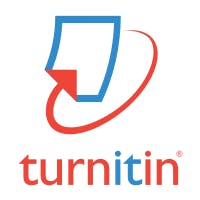The caterwauling about the inability of U.S. students to write well goes back decades. Newsweek published its ballyhooed screed Why Johnny Can’t Write in 1975. This past summer, The New York Times chimed in with Why Kids Can’t Write. Fifteen hundred readers weighed in on that piece. (Who says Americans can’t write?)
Legions of parents and educators have their eye on the problem.
Patti West-Smith has her eye on the solution.
West-Smith, a former English teacher, middle-school principal, and district curriculum supervisor, is the Curriculum Content Manager at Turnitin, an Oakland, Calif.-based educational software company best known for its plagiarism-detection tools. She believes that if you want to find a school district where writing is flourishing, start by looking at the district’s mission statement.
“A characteristic of a successful district is it has a superintendent whose vision includes a concept of literacy,” West-Smith says. “And he or she is willing to invest resources to make sure literacy happens for every student.”
Make the right investments
West-Smith says the three most important investments a district can make for successful writing instruction are professional development, time, and curricular resources.
The professional development piece may surprise some people. “The thing that folks don’t realize is that often times English teachers have not had extensive training in teaching writing,” West-Smith says. “Most teacher preparation programs are heavily focused on literature and reading.”
So West-Smith has tried to give her teachers the write stuff.
“A key tenet of the National Writing Project is to help teachers become better writers themselves,” West-Smith says. “One of the things I’ve done in professional development is to really get teachers to write, then have them reflect on the processes involved when they write, what is working and what isn’t. I want them to gain insight into what they might do differently in their instruction.”
West-Smith also believes that teachers have to be given the time, which is substantial, to establish effective rubrics—to create common writing tasks, to develop coherent criteria and apply them consistently, and to calibrate expectations. “We spent significant amounts of professional development time digging into student writing,” she says, “so that, say, all teachers in a particular grade will clearly block out the shared expectations around what a proficient 4 looks like on a 0-to-4 scoring scale, what an advanced 4 looks like, what a student at the lowest end of the scale looks like.”
Provide feedback that works
West-Smith is impassioned about the importance of appropriate feedback, which she says must be timely, relevant, accessible—using language that the student understands, and actionable. “One of my pet peeves,” West-Smith says, “is when we write something in the margin like Awkward. Or Vague. Something like Make your thesis more comprehensive and clear to your reader is actionable. Vague is not.”
Feedback is more helpful on an early draft than on a final one, she adds. But teachers frequently wait until they receive a finished assignment before commenting extensively.
Don’t let writing get scary
“Often times writing becomes an event,” West-Smith says. “Right? It’s a thing we do at the end of a unit. It’s a thing we do at the end of a book. It’s a thing we do on Writing Wednesdays. It’s episodic that way, and it develops this feeling around it that it is something other than what we do the rest of the time. So it gets to be this big, scary thing, both for students and teachers; it’s the Monster in the Closet.”
The fastest way to slay the Monster is to have students write as much as possible.
“Kids don’t have enough opportunities to practice their writing skills,” West-Smith says, “and teachers don’t have enough opportunities to reflect on what is working. There’s a lot of research that says students, to become better writers, need more opportunities to write.”
But teachers, West-Smith says, are reluctant to hand out assignments that are going to be impossible to critique. “You’re talking about 100 or 120 or even 150 students that you need to try to generate feedback for, formatively, and that’s daunting,” she says. “It can eat up every second of your life. But there’s a real opportunity to leverage technology tools to manage some of these barriers.”
Help teachers extend their reach
West-Smith is a big fan of automated-revision tools. “We’re not going to be able to clone teachers or hire thousands and thousands more so that every student has his or her own individual teacher,” she says. “So we have to look for tools that empower teachers and extend their reach.”
Writing revision tools, such as Turnitin’s Revision Assistant, make it possible to give individual feedback to an entire classroom of students simultaneously. While West-Smith takes pains to point out that technology can never replace a teacher, she also notes that tech tools provide immediate and actionable suggestions in portions that students can easily digest.
“In the product we use for formative feedback, Revision Assistant, we only give four pieces of feedback at a time.” West-Smith says. “Two are positive and two are more constructive. In the initial version, we commented on about 16 things at a time. It was so overwhelming for students that they didn’t know where to start . . . or have any idea what was actually important.”
West-Smith is also a proponent of student-response tools that allow a teacher to track what pupils understand and what they don’t. “I need to know,” she says, “what every student in the room knows about the question I asked. Not just the one or two who have their hands up. I love any technology that allows every student to log an answer.”
Make everyone a better writer
During her years in the classroom, West-Smith developed a conviction that every student, not just those headed to college, can be an effective communicator.
“In my early days as a classroom teacher, there were a great many teachers who felt like you were either a good writer innately or you were not,” she says. “If you were not, then that was just your lot in life.” An inability to write was, ironically, a life sentence.
“Over the last decade,” she says, “there has been pushback on that idea. Now we believe that, while we may not be able to make every student a master of the craft of writing and send them into a career as a professional writer, we certainly can teach them the building blocks to be an effective communicator of ideas.”
And, of course, the notion that good writers are taught rather than born should be empowering for teachers. West-Smith herself knows how much difference even a single teacher can make. When she was in eighth grade in Delaware, her English teacher, Ruth Gray, encouraged her to enter a writing contest, telling her, “Patti, you have a beautiful way of using words.”
“She sought out that competition as a way of telling me I had a gift,” says West-Smith. “That changed my whole outlook and created a confidence in me.”
With Miss Gray’s encouragement, West-Smith slayed the Monster in the Closet. And she won the contest.
Writing Resources
These are some of Patti West-Smith's favorite resources about writing instruction and assessment:
- ReadWriteThink.org
- "On Your Mark: Challenging the Conventions of Grading and Reporting" by Thomas Guskey
- "Elements of Grading: A Guide to Effective Practice" by Douglas Reeves
- "Visible Learning for Teachers: Maximizing Impact on Learning" by John Hattie. “Though it’s not specific to writing,” West-Smith says, “he has helped sway the masses in terms of understanding just how critical the importance of feedback really is. That fundamental understanding drives my work every day.”
- The Words Are CATegorical series by Brian Cleary. “These are children’s books about different parts of speech and other word types,” West-Smith says. “I particularly like Dearly, Nearly, Insincerely: What is an Adverb?”
- Everything Grant Wiggins and Jay McTighe have written about Understanding by Design



